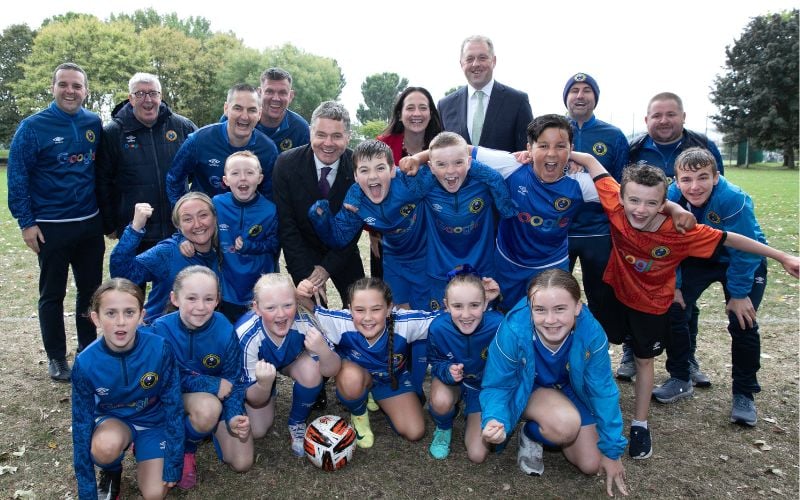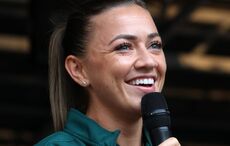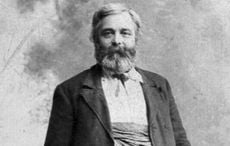Statistically, and in every other possible way on the pitch, Ireland matched the worst performance ever at the European Championships when they finished last in a group comprised of Croatia, Spain and Italy.
Not since Yugoslavia in 1984 have a team finished with zero points and a -9 goal difference. To worsen that fact, Yugoslavia scored twice the number of goals Ireland did, two.
Yes Ireland had a tough group, but the 28 years between 1984 and 2012 teams have faced tougher. Spain are historically good, but Italy and Croatia are not world class teams. Ireland made them look world class however with their less than average play.
Average is an objective term. Average for Spain is different from average for Ireland. Ireland's average performances are pretty poor normally. At this competition, they were embarrassing. Being outclassed is okay, but being outworked and out-thought is just unacceptable.
Ireland didn't have poor players, but their manager was found out when he didn't put his best players on the pitch.
There are certain things that the manager is wrongfully being berated for. Keith Fahey and James McCarthy were injured and unavailable for selection. Both would have at least been in the squad had they made the championships. Seamus Coleman had fallen out of favor at Everton due to a lack of form, it is understandable that Trapattoni didn't bring him because he is not an established international player.
One player who was in the squad was Darron Gibson however.
Gibson left for Everton after Trapattoni said he was being wasted at Manchester United. He found regular first team football in Liverpool and established himself as an important piece in David Moyes' side, one of the better teams in the league. Gibson didn't start a single game at the Championships as, predictably, Trapattoni stuck with Glenn Whelan and Keith Andrews.
Andrews and Whelan are both Premier League players, but neither is a vital player for their relative teams, West Brom and Stoke City. They are limited footballers without great technique, vision or composure. Gibson isn't a star, but he is able to use the ball better than both players and doesn't have a significantly lesser work-rate.
Further compounding Trapattoni's team selection, Paul Green, a player who was not retained by Derby County, a championship side, was brought off the bench ahead of Gibson who didn't feature at all in the three losses.
Gibson isn't a star. He wouldn't have changed any of the results, but Trapattoni's reluctance to use him highlights his reluctance to alter his tactical approach to the game.
Tactically, Trapattoni was found out in this tournament. He never put his team in the best position possible to succeed and showed too much loyalty to players who were hurting the team/didn't fit the philosophy.
That stubbornness is something that must go if Ireland are to ever even reach another major competition.
Realistically, Ireland were lucky to even reach these finals after a campaign that featured a miracle match in Moscow and the easiest of qualifier draws. If the same approach is taken towards the World Cup Qualifiers, put your money on Sweden winning the group now.
If Trapattoni wants to justify his €2.8 million contract extension. There are a number of things he needs to do.
Out with the old
Robbie Keane was forced into the Irish starting team against Spain and should have lost his place before the Italy game. Even in his prime, Keane was never able to be a lone striker in what was essentially a 4-5-1 formation.
The basics of any counter-attacking formation requires either a big striker to hold the ball up or a quick striker to get in behind the center backs. Playing Robbie Keane upfront with Simon Cox in the hole behind him, gives you neither.
It's not like Ireland didn't have the options. Kevin Doyle ran the channels well against Croatia, winning multiple freekicks of which one led to the team's sole goal. Jonathan Walters is the prototypical big man up top, while Shane Long is quicker than an opening goal against Ireland.
Trapattoni was reluctant to play the less experienced players across the board. When the team needed a spark against Croatia, Simon Cox was brought on the left wing ahead of James McClean. McClean's youth was somewhat understandably an issue, but it shouldn't have been, while Stephen Hunt at least plays the position.
Unless Shay Given's injury was more significant than was let on, Kieran Westwood should be the present and future. Stephen Kelly can't have been less effective than John O'Shea, who was also another injury question mark, while Gibson obviously deserved an opportunity.
Sean St. Ledger didn't cover himself in glory this tournament, neither did Stephen Ward. Ward and St. Ledger are solid players but St. Ledger isn't even a regular at Leicester while Ward will be playing in the Championship next year. Everton's Shane Duffy and Aston Villa's Ciaran Clark should be relied upon from now on.
With James McCarthy, McClean, Duffy, Clark, Seamus Coleman, Long and potentially Stephen Ireland coming into the squad, Ireland can no longer employ the same tactical approach that Trapattoni has based his career upon.
A new approach
Prior to the tournament, I was involved in a twitter debate with a Norwich fan who couldn't understand the reasoning behind leaving Wes Hoolahan out of the squad. I'm a big Hoolahan fan, even during his Shelbourne days he was another class, but I also understood that he had no place in a rigid 4-4-2 formation. That was the system Ireland played.
Square pegs don't fit in round holes.
It's time to start digging new holes. Hoolahan is 30 years of age, but he is still one of Ireland's most gifted attacking players. With Stephen Ireland a ready made replacement in four years, there is no reason not to incorporate Hoolahan in the team.
Tactically the 4-4-2 formation is not outdated, but very few teams use it to any great success anymore. Five man midfields are commonplace in the world of international football these days. With Glenn Whelan, Keith Andrews and two wingers who predominantly prefer to attack fullbacks rather than link up with teammates, Ireland are not best suit to counter those formations.
Instead of sticking with Robbie Keane, who should no longer be considered a key player for the country he captains, Ireland need to move to a formation that will allow them to retain more possession. Not only retain possession, but retain it higher up the field.
Having a group that consists of McClean, Gibson, Fahey/Ireland, Hoolahan and Coleman behind a Shane Long or Jonathan Walters, gives Ireland a better tactical approach both defensively and in attack. Instead of watching Richard Dunne and John O'Shea repeatedly hit long balls that bypass the midfield, Ireland have the players capable of working the ball through the middle and down the flanks.
Xavi, Andres Iniesta and David Silva aren't applying for Irish passports anytime soon, but Trapattoni is selling the nation short by playing Jack Charlton style of football with Mick McCarthy level players.
Cian Fahey is a contributing writer to the Guardian, Steelersdepot and FFBLife. You can find him on twitter @Cianaf
Not since Yugoslavia in 1984 have a team finished with zero points and a -9 goal difference. To worsen that fact, Yugoslavia scored twice the number of goals Ireland did, two.
Yes Ireland had a tough group, but the 28 years between 1984 and 2012 teams have faced tougher. Spain are historically good, but Italy and Croatia are not world class teams. Ireland made them look world class however with their less than average play.
Average is an objective term. Average for Spain is different from average for Ireland. Ireland's average performances are pretty poor normally. At this competition, they were embarrassing. Being outclassed is okay, but being outworked and out-thought is just unacceptable.
Ireland didn't have poor players, but their manager was found out when he didn't put his best players on the pitch.
There are certain things that the manager is wrongfully being berated for. Keith Fahey and James McCarthy were injured and unavailable for selection. Both would have at least been in the squad had they made the championships. Seamus Coleman had fallen out of favor at Everton due to a lack of form, it is understandable that Trapattoni didn't bring him because he is not an established international player.
One player who was in the squad was Darron Gibson however.
Gibson left for Everton after Trapattoni said he was being wasted at Manchester United. He found regular first team football in Liverpool and established himself as an important piece in David Moyes' side, one of the better teams in the league. Gibson didn't start a single game at the Championships as, predictably, Trapattoni stuck with Glenn Whelan and Keith Andrews.
Andrews and Whelan are both Premier League players, but neither is a vital player for their relative teams, West Brom and Stoke City. They are limited footballers without great technique, vision or composure. Gibson isn't a star, but he is able to use the ball better than both players and doesn't have a significantly lesser work-rate.
Further compounding Trapattoni's team selection, Paul Green, a player who was not retained by Derby County, a championship side, was brought off the bench ahead of Gibson who didn't feature at all in the three losses.
Gibson isn't a star. He wouldn't have changed any of the results, but Trapattoni's reluctance to use him highlights his reluctance to alter his tactical approach to the game.
Tactically, Trapattoni was found out in this tournament. He never put his team in the best position possible to succeed and showed too much loyalty to players who were hurting the team/didn't fit the philosophy.
That stubbornness is something that must go if Ireland are to ever even reach another major competition.
Realistically, Ireland were lucky to even reach these finals after a campaign that featured a miracle match in Moscow and the easiest of qualifier draws. If the same approach is taken towards the World Cup Qualifiers, put your money on Sweden winning the group now.
If Trapattoni wants to justify his €2.8 million contract extension. There are a number of things he needs to do.
Out with the old
Robbie Keane was forced into the Irish starting team against Spain and should have lost his place before the Italy game. Even in his prime, Keane was never able to be a lone striker in what was essentially a 4-5-1 formation.
The basics of any counter-attacking formation requires either a big striker to hold the ball up or a quick striker to get in behind the center backs. Playing Robbie Keane upfront with Simon Cox in the hole behind him, gives you neither.
It's not like Ireland didn't have the options. Kevin Doyle ran the channels well against Croatia, winning multiple freekicks of which one led to the team's sole goal. Jonathan Walters is the prototypical big man up top, while Shane Long is quicker than an opening goal against Ireland.
Trapattoni was reluctant to play the less experienced players across the board. When the team needed a spark against Croatia, Simon Cox was brought on the left wing ahead of James McClean. McClean's youth was somewhat understandably an issue, but it shouldn't have been, while Stephen Hunt at least plays the position.
Unless Shay Given's injury was more significant than was let on, Kieran Westwood should be the present and future. Stephen Kelly can't have been less effective than John O'Shea, who was also another injury question mark, while Gibson obviously deserved an opportunity.
Sean St. Ledger didn't cover himself in glory this tournament, neither did Stephen Ward. Ward and St. Ledger are solid players but St. Ledger isn't even a regular at Leicester while Ward will be playing in the Championship next year. Everton's Shane Duffy and Aston Villa's Ciaran Clark should be relied upon from now on.
With James McCarthy, McClean, Duffy, Clark, Seamus Coleman, Long and potentially Stephen Ireland coming into the squad, Ireland can no longer employ the same tactical approach that Trapattoni has based his career upon.
A new approach
Prior to the tournament, I was involved in a twitter debate with a Norwich fan who couldn't understand the reasoning behind leaving Wes Hoolahan out of the squad. I'm a big Hoolahan fan, even during his Shelbourne days he was another class, but I also understood that he had no place in a rigid 4-4-2 formation. That was the system Ireland played.
Square pegs don't fit in round holes.
It's time to start digging new holes. Hoolahan is 30 years of age, but he is still one of Ireland's most gifted attacking players. With Stephen Ireland a ready made replacement in four years, there is no reason not to incorporate Hoolahan in the team.
Tactically the 4-4-2 formation is not outdated, but very few teams use it to any great success anymore. Five man midfields are commonplace in the world of international football these days. With Glenn Whelan, Keith Andrews and two wingers who predominantly prefer to attack fullbacks rather than link up with teammates, Ireland are not best suit to counter those formations.
Instead of sticking with Robbie Keane, who should no longer be considered a key player for the country he captains, Ireland need to move to a formation that will allow them to retain more possession. Not only retain possession, but retain it higher up the field.
Having a group that consists of McClean, Gibson, Fahey/Ireland, Hoolahan and Coleman behind a Shane Long or Jonathan Walters, gives Ireland a better tactical approach both defensively and in attack. Instead of watching Richard Dunne and John O'Shea repeatedly hit long balls that bypass the midfield, Ireland have the players capable of working the ball through the middle and down the flanks.
Xavi, Andres Iniesta and David Silva aren't applying for Irish passports anytime soon, but Trapattoni is selling the nation short by playing Jack Charlton style of football with Mick McCarthy level players.
Cian Fahey is a contributing writer to the Guardian, Steelersdepot and FFBLife. You can find him on twitter @Cianaf




Comments